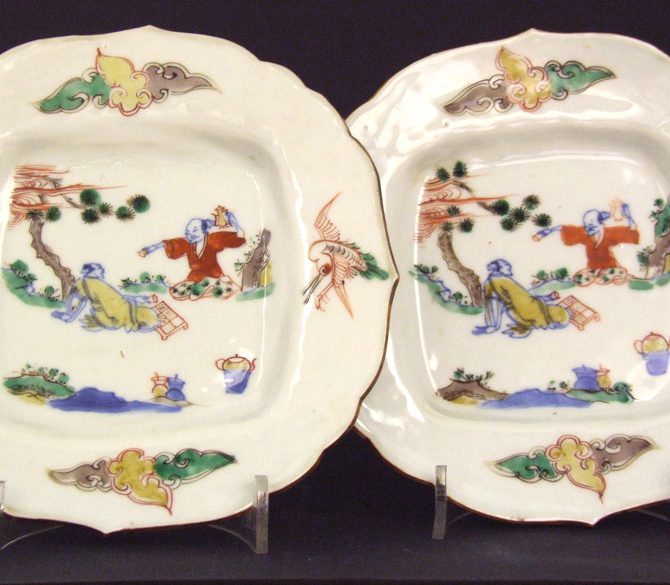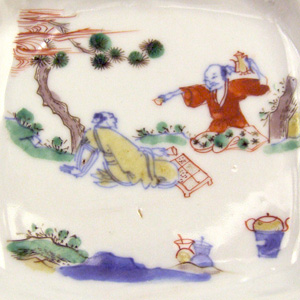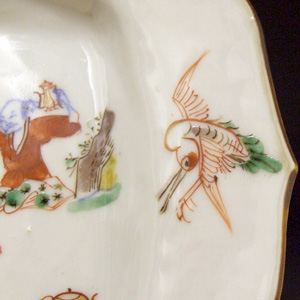
TIANQI or CHONGZHEN c.1620 – 1640 Transitional Porcelain
Two Late Ming Transitional Porcelain Wucai Dish for the Japanese Market, Tianqi 1621-1627 or Chongzhen 1628-1644. Decorated with Two Scholars Playing Weiqi (Go). Click on the Image for More Information. They are Also Drinking Wine Beneath a Pine Tree. The Bases with a Four Character Mark Fu Tian Xia Taiping “Happiness and Universal Peace”.
SOLD
- Condition
- 21598 (LEFT) : Tiny glaze frit to the back rim c.2 x 1 mm. 215981 (RIGHT) : Three glaze frit to the back rim c.2 x 1 mm.
- Size
- 14.5 cm (5 3/4 inches)
- Provenance
- S. Marchant & Son, Kensington Church Street.
- Stock number
- 21598
- References
- Ming Porcelain for the Japanese Market, Ko-sometsuke & Ko-akai (Introduction by Julia B. Curtis, S.Marchant & Son, Kensington Church Street, London W8.2008) Page 95, plate 51 a/b. Five dishes from the collection of Sir Michael Butler, each with a different scene but including the scene on the present examples see : Trade and Transformation, Jingdezhen Porcelain for Japan, 1620-1645 (Julia B.Curtis, China Institute Gallery, New York 2006)pages 92 and 93, catalogue number 71.
Information
Wucai :
Wucai means five coloured decoration. This consists of the overglaze enamel colours ; red, green, and yellow, underglaze cobalt blue and the white of the porcelain itself.
Ming Porcelain for Japan :
During the late Ming Period the Chinese made a large among of porcelain for the Japanese market, it was made from the Wanli period (1573-1620) and ended in the Chongzhen period (1628-1644), the main period of production being the 1620`2 and 1630`s. The porcelain objects produced were made especially for the Japanese market, both the shapes and the designs were tailored to Japanese taste, the production process too allowed for Japanese aesthetics to be included in the finished object. Its seams firing faults were added, repaired tears in the leather-hard body were too frequent to not, in some cases, be deliberate. These imperfections as well as the fritting Mushikui (insect-nibbled) rims and kiln grit on the footrims all added to the Japanese aesthetic. The shapes created were often expressly made for the Japanese tea ceremony meal, the Kaiseki, small dishes for serving food at the tea ceremony are the most commonly encountered form. Designs, presumably taken from Japanese drawings sent to China, are very varied, often using large amount of the white porcelain contrasting well with the asymmetry of the design.
Weiqi :
Go known in Chinese as Weiqi and Go in Japan, is an ancient board game for two players that is noted for being rich in strategy despite its simple rules. The game is played by two players who alternately place black and white stones on the vacant intersections of a grid of 19×19 lines. The object of the game is to control (surround) a larger portion of the board than the opponent. Go originated in ancient China more than 2,500 years ago, and although it is not known exactly when the game was invented, by the 3rd century BC it was already a popular pastime, as indicated by a reference to the game in the Analects of Confucius. Go reached the West through Japan, which is why it is commonly known by its Japanese name. From http://en.wikipedia.org/wiki/Go_%28game%29

